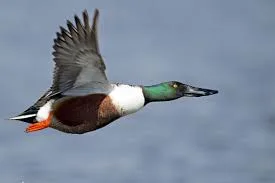The Hokersar Wetland Conservation Reserve, North India’s premier waterfowl habitat, has once again underscored its global ecological importance with a spectacular congregation of birds during this year’s winter season. The Asian Waterbird Census (AWC) 2025 recorded over 400,000 waterfowl at Hokersar, reaffirming its title as the “Queen Wetland of Kashmir.”
According to the census data, the Eurasian Teal was the most abundant species with 136,088 individuals, accounting for 33.79 percent of the total count. It was followed by the Eurasian Coot (63,712) and Eurasian Wigeon (58,800). Other significant species included Mallards (52,374), Northern Shovelers (50,851), and Northern Pintails (16,666).
“The numbers at Hokersar reaffirm its global importance as a critical stopover and wintering site for migratory birds from Central Asia and Siberia,” said an official involved with the census. “Sustained conservation efforts are essential to preserve the wetland’s fragile ecosystem.”
Located just 10 kilometres west of Srinagar, Hokersar spans 1,375 hectares and boasts a rich heritage dating back over a century. Once a shooting resort of Maharaja Hari Singh, it was designated a state Rakh in 1945 and declared a Ramsar Site in 2005. The Department of Wildlife Protection, Jammu and Kashmir, currently manages the reserve.
Fed by the Doodhganga River and the Sukhnag stream, the wetland’s water depth varies seasonally, rising to 2.5 metres during spring snowmelt and receding to 0.7 metres by autumn. Its marshy habitat supports aquatic plants such as Typha, Phragmites, Trapa, and Nymphoides, while adjacent rice fields provide vital foraging grounds for the avian visitors.
Ecologists emphasise that Hokersar is more than a bird sanctuary. It serves as a natural flood basin, absorbing excess waters from the Doodhganga and Sukhnag rivers and protecting Srinagar from seasonal flooding. Additionally, it contributes to groundwater recharge, filters pollutants, cycles nutrients, sustains aquatic life, and improves water quality. The wetland also supports local livelihoods through fishing, reed harvesting, grazing, and rice cultivation, while playing a role in climate regulation as a carbon sink.
Experts warn that Hokersar faces mounting threats from encroachment, siltation, and pollution — dangers that could imperil both its biodiversity and ecosystem services. “Hokersar is not just a haven for birds; it is a lifeline for Srinagar,” remarked a conservationist associated with the AWC. “Protecting it means safeguarding people, water, and culture.”
With over half a million migratory birds arriving annually from distant lands, Hokersar remains one of the most critical wetlands on the Central Asian Flyway. The AWC 2025 findings serve as a timely reminder that its preservation is vital not only for wildlife but also for the well-being of local communities and the resilience of Kashmir’s environment.
Species Count Percentage
Eurasian Wigeon: 58800 14.60
Gadwall: 18437, 4.58percent
Mallard: 52374, 13.01percent
Northern Pintail: 16666, 4.14percent
Northern Shoveler: 50851, 12.63 percent
Eurasian Coot: 63712, 15.82percent
Eurasian Teal: 136088, 33.79 percent






